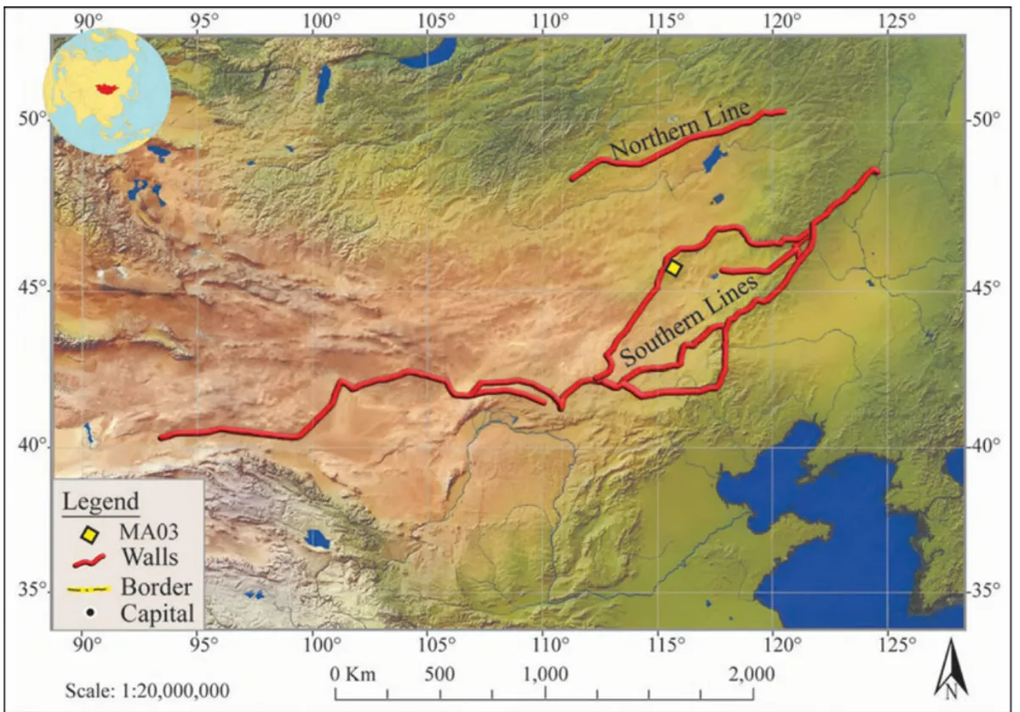
Location of an important architectural work and wall grooves running along the terrain in Mongolia (Photo: Scitech Daily).
A recent archaeological dig in Mongolia has revealed surprising findings of a massive ancient wall system, challenging long-held notions about the purpose of border defense structures.
Scientists from the Hebrew University of Jerusalem and the National University of Mongolia have just announced the results of an excavation of part of the Medieval Wall System (MWS) – a vast network stretching up to 4,000 km, spanning the present-day territories of China, Mongolia and Russia.
The study focused on the 405-km-long "Mongolian Arc" section, built between the 9th and 12th centuries, during the Jin Dynasty.
Although it cannot compare with the legendary Great Wall of China with a total length of up to 21,196 km, this system still attracts special attention from international archaeologists because of the mysteries related to its true function.
The unexpected function of the ancient city wall
Contrary to popular belief that ancient city walls were built to prevent invasions, the team's findings suggest that the MWS system was not traditionally a military defense.
According to Professor Gideon Shelach-Lavi, head of the archaeological team, most of the structures in Mongolia were just shallow ditches and ditches, which were not enough to stop the enemy. This leads to a convincing new hypothesis: the wall could have been built to demarcate territory and control movement in the border area.
The presence of forts spaced at regular intervals along the wall further supports this hypothesis, suggesting that it served as checkpoints, helping to monitor people, livestock and goods, rather than as a line of defense against large-scale invasion.
"Soft" project but big investment

Map showing the location of the wall system spanning East Asia (Photo: Scitech Daily).
Although not built for direct combat, the MWS system still received significant investment. Archaeologists have found Song coins, iron objects, and the remains of military barracks, suggesting that soldiers and officials were stationed there to monitor the area year-round.
However, this system ultimately failed to sustain the Jin Dynasty. In the 13th century, the empire collapsed at the hands of the Mongols, and with it, the aforementioned wall system gradually fell into oblivion.
These landmark discoveries are contributing to changing the traditional understanding of ancient border structures in the Eurasian region.
Accordingly, the wall is not only a shield against invaders, but can also be a tool for territorial administration, controlling the flow of people and asserting sovereignty through symbolic works, not necessarily of a purely military nature.
Source: https://dantri.com.vn/khoa-hoc/tim-thay-van-ly-truong-thanh-thu-2-dai-4000-km-20250602063922993.htm



























![[Photo] National Assembly Chairman Tran Thanh Man visits Vietnamese Heroic Mother Ta Thi Tran](https://vphoto.vietnam.vn/thumb/1200x675/vietnam/resource/IMAGE/2025/7/20/765c0bd057dd44ad83ab89fe0255b783)







































































Comment (0)